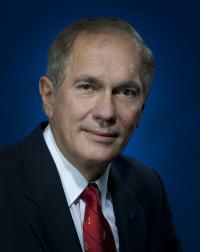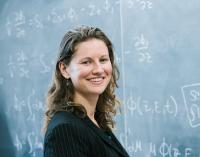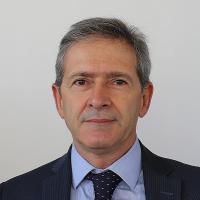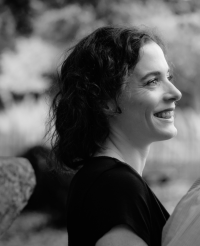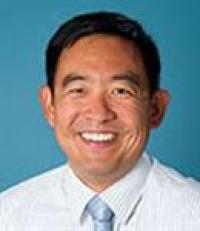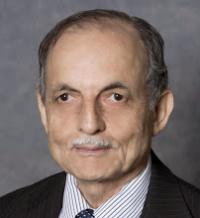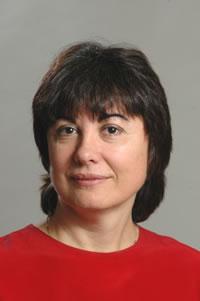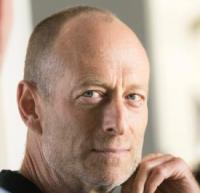Spring 2016 Colloquium Series
Nuclear Energy: Achievements, Lessons Learned & Prospects
SPEAKER: ROBERT A. BARI, PH.D. SENIOR PHYSICIST, BROOKHAVEN NATIONAL LABORATORY DATE/TIME: MON, 06/06/2016 – 4:00PM TO 5:00PM LOCATION: 3105 ETCHEVERRY HALL Spring 2016 Colloquium Series Abstract: The historical development of nuclear energy as an enabling technology will be reviewed. Current successes and key milestones will be presented. Lessons-learned from the three major nuclear accidents during the past four…
Read MoreThe Opportunity of Global Nuclear Innovation
SPEAKER: RACHEL SLAYBAUGH, PH.D. ASSISTANT PROFESSOR, DEPT. OF NUCLEAR ENGINEERING UNIVERSITY OF CALIFORNIA, BERKELEY DATE/TIME: MON, 04/25/2016 – 4:00PM TO 5:00PM LOCATION: 3105 ETCHEVERRY HALL Spring 2016 Colloquium Series Abstract: To expand our ability to improve global health, the environment, and prosperity, a new level of innovation in nuclear energy is needed because nuclear must be an integral…
Read MoreIAEA Activities in Support of Advanced Nuclear Energy Systems Development and Deployment
SPEAKER: STEFANO MONTI, PH.D. HEAD OF THE NUCLEAR POWER TECHNOLOGY DEVELOPMENT SECTION OF THE INTERNATIONAL ATOMIC ENERGY AGENCY (IAEA) DATE/TIME: MON, 04/18/2016 – 4:00PM TO 5:00PM LOCATION: 3105 ETCHEVERRY HALL Spring 2016 Colloquium Series Abstract: The International Atomic Energy Agency (IAEA) actively supports its Member States in the development of evolutionary and innovative nuclear reactors. With the fundamental support of its…
Read MoreHere be Dragons: Mysteries of the Neutrino
SPEAKER: GABRIEL OREBI GANN, PH.D. ASSISTANT PROFESSOR DEPARTMENT OF PHYSICS UNIVERSITY OF CALIFORNIA, BERKELEY DATE/TIME: MON, 04/11/2016 – 4:00PM TO 5:00PM LOCATION: 3105 ETCHEVERRY HALL Spring 2016 Colloquium Series Abstract: Neutrinos are one of the most fascinating particles that occur in nature. Hundreds of millions of times smaller than the proton, the neutrino was once thought to be…
Read MoreAccelerator Research in the U.S. for High Energy Physics: A biased perspective
SPEAKER: WILLIAM BARLETTA, PH.D. DIRECTOR, US PARTICLE ACCELERATOR SCHOOL, FERMILAB DATE/TIME: MON, 03/14/2016 – 4:00PM TO 5:00PM LOCATION: 3105 ETCHEVERRY HALL Spring 2016 Colloquium Series Abstract: The U.S. could move boldly toward accelerating transformational accelerator research for high-energy physics. Profound questions remain to be answered in particle physics; recent discoveries reconfirm the value of continued investments. However, going…
Read MoreProving the Negative: The Evolution of Nuclear Safeguards and Challenges for Implementation
SPEAKER: LANCE KIM, PH.D. DATE/TIME: MON, 02/29/2016 – 4:00PM TO 5:00PM LOCATION: 3105 ETCHEVERRY HALL Spring 2016 Colloquium Series Abstract: Under its State Level Concept, the International Atomic Energy Agency envisions a State Level Approach for safeguards implementation that considers, inter alia, a state’s nuclear and nuclear-related activities and capabilities as a whole when developing an annual safeguards…
Read MoreLow-dose Radiation: A Problem or a Solution?
SPEAKER: MOHAN DOSS, PH.D., MCCPM MEDICAL PHYSICIST ASSOCIATE PROFESSOR, DIAGNOSTIC IMAGING FOX CHASE CANCER CENTER DATE/TIME: MON, 02/08/2016 – 4:00PM TO 5:00PM LOCATION: 3105 ETCHEVERRY HALL Spring 2016 Colloquium Series Abstract: The carcinogenic effect of low-dose radiation (LDR) has been debated intensely in the scientific community over the past several decades, with many publications supporting the linear no-threshold…
Read MoreNuclear Science and Security Consortium: Training the Next Generation of Experts
SPEAKER: JASMINA VUJIC, PH.D. PROFESSOR OF NUCLEAR ENGINEERING PROGRAM DIRECTOR, NUCLEAR SCIENCE AND SECURITY CONSORTIUM UNIVERSITY OF CALIFORNIA, BERKELEY DATE/TIME: MON, 02/01/2016 – 4:00PM TO 5:00PM LOCATION: 3105 ETCHEVERRY HALL Spring 2016 Colloquium Series Abstract: The Nuclear Science and Security Consortium (NSSC) enlists seven of the Nation’s premier educational institutions and four DOE national laboratories to grow and…
Read MoreA Noob’s Guide to Reproducibility
SPEAKER: PHILIP B. STARK, PH.D. PROFESSOR OF STATISTICS SENIOR FELLOW, BERKELEY INSTITUTE OF DATA SCIENCE ASSOCIATE DEAN, DIVISION OF MATHEMATICAL AND PHYSICAL SCIENCES UNIVERSITY OF CALIFORNIA, BERKELEY DATE/TIME: MON, 01/25/2016 – 4:00PM TO 5:00PM LOCATION: 3105 ETCHEVERRY HALL Spring 2016 Colloquium Series Abstract: What does it mean to work reproducibly and transparently? Why bother? Whom does it benefit,…
Read More